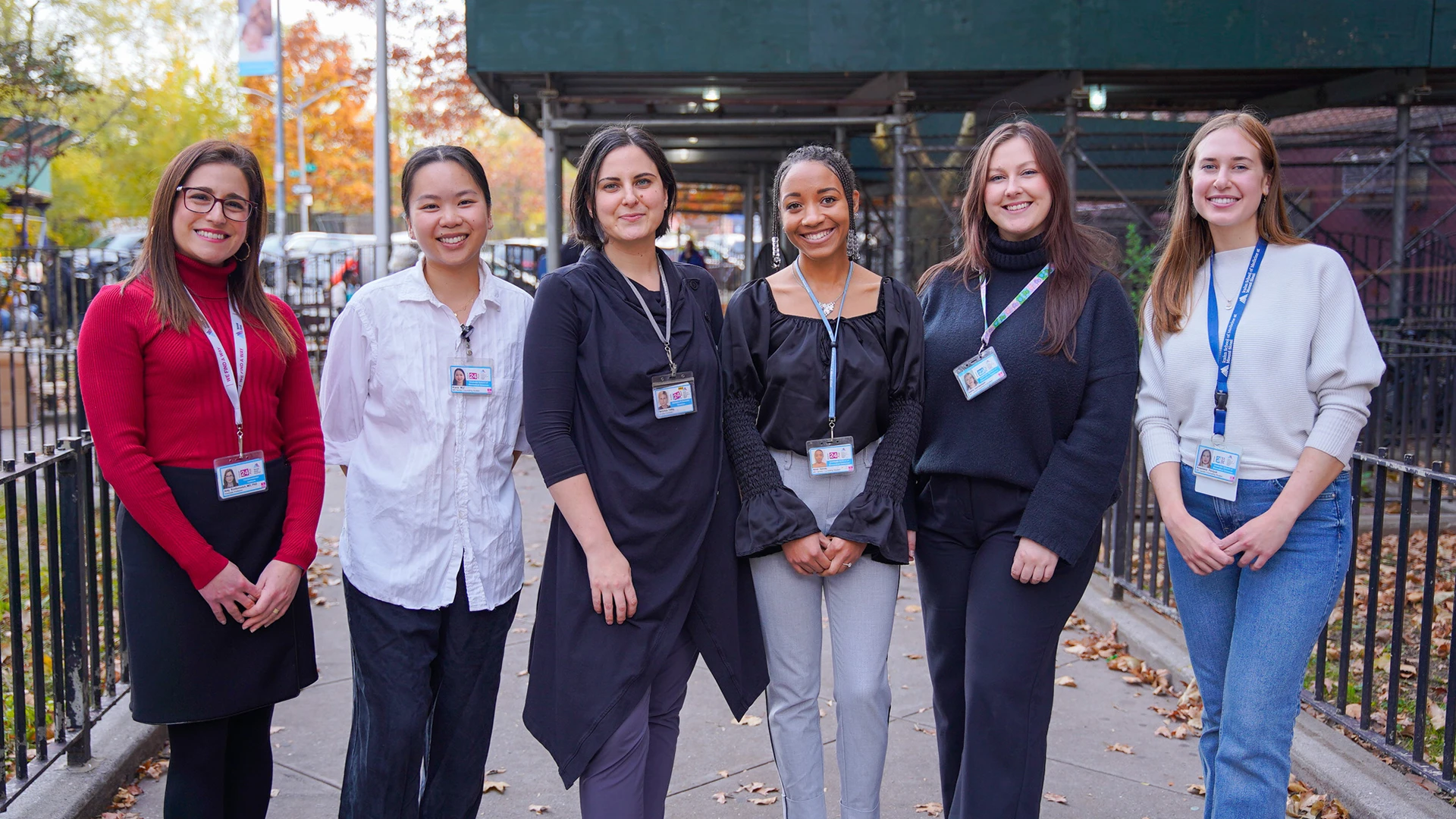Experts across the Mount Sinai Health System are working together to improve education, diagnosis, and treatment for people with hereditary transthyretin amyloidosis (hATTR) cardiomyopathy. This genetic condition significantly increases the risk of heart disease and disproportionately affects African American and Latinx people in the United States.
Transthyretin amyloidosis occurs when the liver produces an abnormal protein that collects in tissues throughout the body as amyloids, including in the heart. Two types of transthyretin amyloidosis exist: A “wild type” that arises spontaneously in some older adults and a hereditary form caused by mutations in the TTR gene. Scientists have identified more than 130 mutations in TTR. In the United States, the most common variant is known as V142I.
People with the TTR V142I variant have a 60 percent increase in the risk of heart failure, notes Amy Kontorovich, MD, PhD, Associate Professor of Medicine (Cardiology) at the Icahn School of Medicine at Mount Sinai and Director of the Center for Inherited Cardiovascular Diseases at the Mount Sinai Fuster Heart Hospital.
In the United States, the variant occurs in about 1 percent of Hispanic/Latinx individuals and up to 4 percent of African Americans. It is more prevalent overall than the BRCA1 and BRCA2 mutations that increase breast cancer risk—yet few members of the public have ever heard of amyloid cardiomyopathy, let alone the variant most associated with it.
Dr. Kontorovich is one of many Mount Sinai physicians and scientists working to change that. Those experts are leading research to improve diagnosis and treatment and developing outreach efforts to increase awareness and access to genetic testing for the disease. Genetic testing can identify the common variant of hATTR, she says, but too few people know about it. In a study of population-based genomic screening for the TTR V142I variant published in the Journal of Personalized Medicine, Dr. Kontorovich found that more than half of participants who tested positive for the variant were exhibiting hATTR-related systemic features at the time of the test.

During an hATTR awareness event at a senior center in Upper Manhattan, Mark McPhee discussed his family health history with Amy Kontorovich, MD, PhD.

Elsie Ruiz, a senior center member, receives a swab for testing from Veronica Fettig, genetic counselor.
“This gene is so prevalent in the communities that we care for at Mount Sinai,” notes Sean Pinney, MD, Chief of Cardiology at Mount Sinai Morningside and Professor of Medicine (Cardiology) at Icahn Mount Sinai. “It’s right under our noses.”
Yet awareness of hATTR is growing, Dr. Pinney says. Physicians have become more attuned to clues that point to a diagnosis of cardiac amyloid. These include:
Heart failure with normal ejection fraction
Carpal tunnel syndrome
Frequent occurrence of atrial fibrillation
Spinal stenosis
Echocardiographic features such as a reduction in voltage or an increased heart muscle thickening
The disease was historically diagnosed with a heart biopsy but can now be identified with a noninvasive nuclear scan—an important step forward for earlier diagnosis. Treatment, too, has improved significantly. For people with hereditary forms of the disease, gene-silencing treatments, such as patisiran, inotersen, and vutrisiran, can target TTR gene expression to reduce production of transthyretin in the liver and halt amyloid deposition. Another class of drugs, including tafamidis, stabilizes the transthyretin protein, preventing it from forming amyloids that would otherwise infiltrate heart tissues.
New treatments are also on the horizon. In 2024, Mount Sinai intends to launch a clinical trial to test a gene editing technique using CRISPR to splice mutations out of the TTR gene. Another novel treatment under investigation takes an immunological approach, delivering an antibody-like molecule that binds to amyloid already deposited in tissues and flags it for the immune system to clear away. The treatment is being tested in Europe, Dr. Pinney says, and Mount Sinai researchers hope to launch a trial to study it in the United States soon. “This is an exciting approach that may actually leach the damaging protein out of the body’s tissues,” he says.
The development of new treatments has led to a push for earlier diagnosis. “Existing drugs are most effective when they’re started early, at the least symptomatic stages of disease,” Dr. Kontorovich says. To enable earlier diagnosis, she and her colleagues at the Center for Inherited Cardiovascular Diseases are developing novel methods for identifying hATTR at earlier stages than existing tests can detect. In one line of research, her team is working to improve diagnosis with PET scans using nuclear tracers that attach to amyloid. In another project, she seeks to identify blood biomarkers associated with early disease.

Amy Kontorovich, MD, PhD, left, at an hATTR awareness event at a New York City Housing Authority senior center in Upper Manhattan, with team members, from left, student Kiana Moi, genetic counselor Veronica Fettig, and students Nirel Spivey, Emily Henderson, and Anastasia Pavlyuk.
Her efforts outside the laboratory are just as impactful. Dr. Kontorovich and her team participate in public events and town halls to educate community members about hATTR risk. In collaboration with the Institute for Health Equity Research at Mount Sinai, the team is launching a project to study and address the barriers to improving genetic testing for TTR. The community-based genetic screening study will provide education, genetic counseling, and genetic testing at health fairs and senior centers. The research team will collect survey data from participants and hold focus groups to assess the effectiveness of their genetic counseling efforts and genetic testing outcomes.
“This genetic variant significantly increases the risk of heart failure. People with African American and Hispanic backgrounds deserve to be educated about their risk,” Dr. Kontorovich says.
By raising awareness, expanding access to genetic testing, and developing new tests and treatments, Mount Sinai is improving outcomes for people with hATTR in New York City and beyond. The Health System is a leader in this because of its diverse patient population and commitment to collaboration, Dr. Kontorovich says. Experts from the Mount Sinai Fuster Heart Hospital are partnering with groups at Mount Sinai, including the Institute for Genomic Health and the Institute for Health Equity Research, to ensure that research findings translate to greater awareness and better outcomes for patients.
The treatment landscape for transthyretin amyloidosis is changing rapidly, Dr. Pinney says. “It’s been an amazing ride over the last 10 years, and 10 years from now, the field will be completely transformed,” he predicts. “There is hope that we can change this from a severely debilitating and life-threatening chronic illness into a medical condition that can be managed and, in some cases, cured.”
Featured

Amy Kontorovich, MD, PhD
Associate Professor of Medicine (Cardiology, and Medical Genomics)

Sean Pinney, MD
Chief of Cardiology at Mount Sinai Morningside, and Professor of Medicine (Cardiology)
